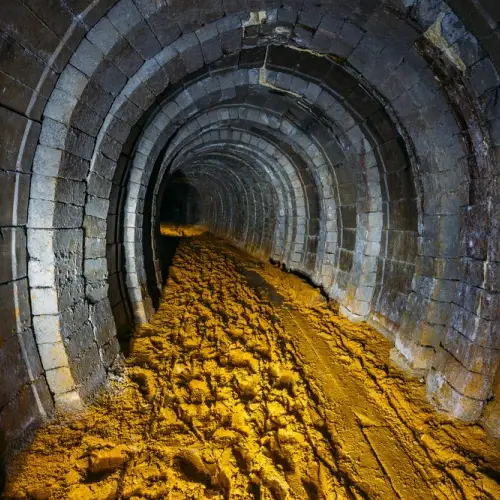
Nuclear power is a powerful and controversial source of energy that generates intense debate due to its ability to produce large amounts of electricity and its potential environmental impact.
Next, we will look at how nuclear energy affects the environment, exploring the technical aspects at different stages of its life cycle from uranium mining to radioactive waste management.
Uranium mining and processing
 Nuclear energy production begins with the mining of uranium, the main fuel used in nuclear power plants. The extraction of natural uranium is a process that can be very damaging to the environment. Both open-pit and underground mines generate mining waste and emit radon, a radioactive gas.
Nuclear energy production begins with the mining of uranium, the main fuel used in nuclear power plants. The extraction of natural uranium is a process that can be very damaging to the environment. Both open-pit and underground mines generate mining waste and emit radon, a radioactive gas.
In addition, the processing of uranium for enrichment generates low-level radioactive waste and consumes large amounts of water, negatively affecting local ecosystems.
Energy production in nuclear power plants
Nuclear power plants operate by fissioning uranium atoms, releasing a large amount of energy.
Technically, these plants emit very little air pollutants compared to fossil fuel plants. However, the waste heat from the cooling processes, which usually use large volumes of water from rivers or seas, can cause the water temperature to rise.
This phenomenon, known as "thermal pollution", alters aquatic ecosystems and can be harmful to species sensitive to temperature changes.
Radioactive waste management
Radioactive waste management is one of the biggest environmental challenges in the energy sector. High-level waste, including spent nuclear fuel, remains radioactive for thousands of years.
Safe storage of this waste requires high-integrity containers and geologically stable sites. However, in many countries, the lack of permanent facilities has led to waste being stored temporarily at the plants themselves, increasing the risk of leakage and contamination.
Nuclear accidents
 Nuclear accidents represent the greatest environmental risk of nuclear energy. Examples such as Chernobyl in 1986 and Fukushima in 2011 have shown that radioactive leaks can have devastating consequences for the environment and human health.
Nuclear accidents represent the greatest environmental risk of nuclear energy. Examples such as Chernobyl in 1986 and Fukushima in 2011 have shown that radioactive leaks can have devastating consequences for the environment and human health.
The released radiation can contaminate large areas of land and water, affecting flora and fauna for decades, if not centuries.
Comparison with other energy sources
Compared to fossil fuel plants, nuclear power plants emit significantly less carbon dioxide (CO2), a greenhouse gas that contributes to climate change. This positive aspect makes nuclear power attractive as part of a strategy to reduce global carbon emissions.
Renewable energy sources, such as solar and wind, offer alternatives with lower environmental impacts. They do not generate radioactive waste or risk catastrophic accidents. However, the production and disposal of components such as solar panels and wind turbines also have their own impacts, although they are generally less severe than those associated with nuclear power.
Technological advances
In the area of technological advances, efforts are being made to mitigate the environmental impacts of nuclear energy.
For example, new generation reactors, known as Generation IV reactors, promise to be safer and more efficient. These reactors are designed to produce less radioactive waste and be more resistant to accidents.
Furthermore, the development of nuclear fusion technologies, which are currently in the experimental phase, could revolutionize nuclear energy by offering a virtually unlimited source of energy with much less hazardous waste. Fusion, which mimics the processes that occur in the sun, has the potential to be a clean energy solution if it can be mastered.